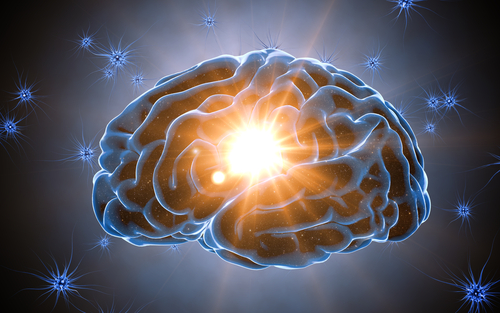Brain Development Discovery Could Have Implications for Parkinson’s, Other Neurological Diseases

An inflammatory pathway that plays a key role in the proper removal of faulty cells during brain development could open new avenues for studying or treating neurological diseases, including Parkinson’s.
The study, “AIM2 inflammasome surveillance of DNA damage shapes neurodevelopment,” was published in Nature.
During normal development, cells in the brain grow rapidly; then about half of these newly-made cells are “pruned back,” dying off in tightly regulated ways. Abnormalities in this process are believed to underlie a wide range of neurological conditions, but the exact mechanisms that control this development are still not fully understood.
Inflammasomes are groups of proteins that act together to drive inflammation in response to certain molecular triggers. For example, the AIM2 inflammasome is activated by damaged or irregular DNA, which can accumulate in cells that are infected with viruses or bacteria. In the new study, researchers demonstrated that the AIM2 inflammasome also plays an important role in brain development.
The team, led by University of Virginia (UVA) researchers, first observed evidence of inflammasome activation in the developing brain in mice. Then they genetically engineered mice that lacked genes critical for inflammasome formation. These mice had abnormal anxiety-like behaviors, suggestive of brain abnormalities.
Because damaged DNA is a known activator of the AIM2 inflammasome, the researchers sought to understand whether the DNA damage that normally occurs during neurodevelopment (as a consequence of rapid cellular division, for example) could trigger activation of the AIM2 inflammasome in the developing brain.
“You don’t want [brain] cells to have genomic compromises. You don’t want damaged DNA. So, this would be a normal mechanism to expel those cells from being incorporated into the central nervous system,” study co-author Catherine R. Lammert, a graduate student at UVA, said in a press release.
The results revealed that within mice’s brain cells, inflammasomes were located close to areas of DNA damage, and when extra DNA damage was induced (with radiation), inflammasome activation increased.
This model effectively suggests that the inflammasome could serve as a sort of “clean-up” for damaged cells.
Furthermore, in mice lacking functional inflammasomes, there was less cell death during brain development, but also more DNA damage in the developed brain. And, when DNA damage was induced in these mice with radiation, there was less resultant cell death than when the same treatment was given to wild-type mice with functional inflammasomes.
Collectively, these data support a model where AIM2 inflammasome activation is necessary for the cell death that is part of normal brain development — specifically, that the inflammasome helps to remove cells with damaged DNA.
The exact manner of inflammasome-induced cell death was noteworthy, because it previously was believed that, in the developing brain, cell death occurs via apoptosis (a type of programmed, non-inflammatory cell death). However, this idea is based on an outdated framework wherein apoptosis was the only form of programmed cell death, which is an orchestrated series of steps the cell undertakes as it dies. The alternative would be necrosis, in which a cell is simply destroyed.
However, other forms of programmed cell death have been discovered recently. The researchers found evidence that the AIM2 inflammasome participates in one of these, called pyroptosis, a programmed form of inflammatory cell death that is mediated by the protein gasdermin-D.
“Neurodevelopment is a very complicated process. This form of cell death actually plays a role in removing unwanted cells from the brain to establish a healthy [central nervous system] with the correct connections and the right number of cells,” Lammert said.
Because abnormal brain development underlies so many neurological conditions, better comprehension of how these systems work could aid in understanding those conditions, or even developing new therapeutic strategies.
“Hitting this pathway in the mature brain would likely provide a treatment strategy for any neurodegenerative disease associated with DNA damage, and that’s all the major heavy hitters: Alzheimer’s disease, Parkinson’s, [amyotrophic lateral sclerosis] ALS,” said study co-author John Lukens, PhD, a UVA professor.






